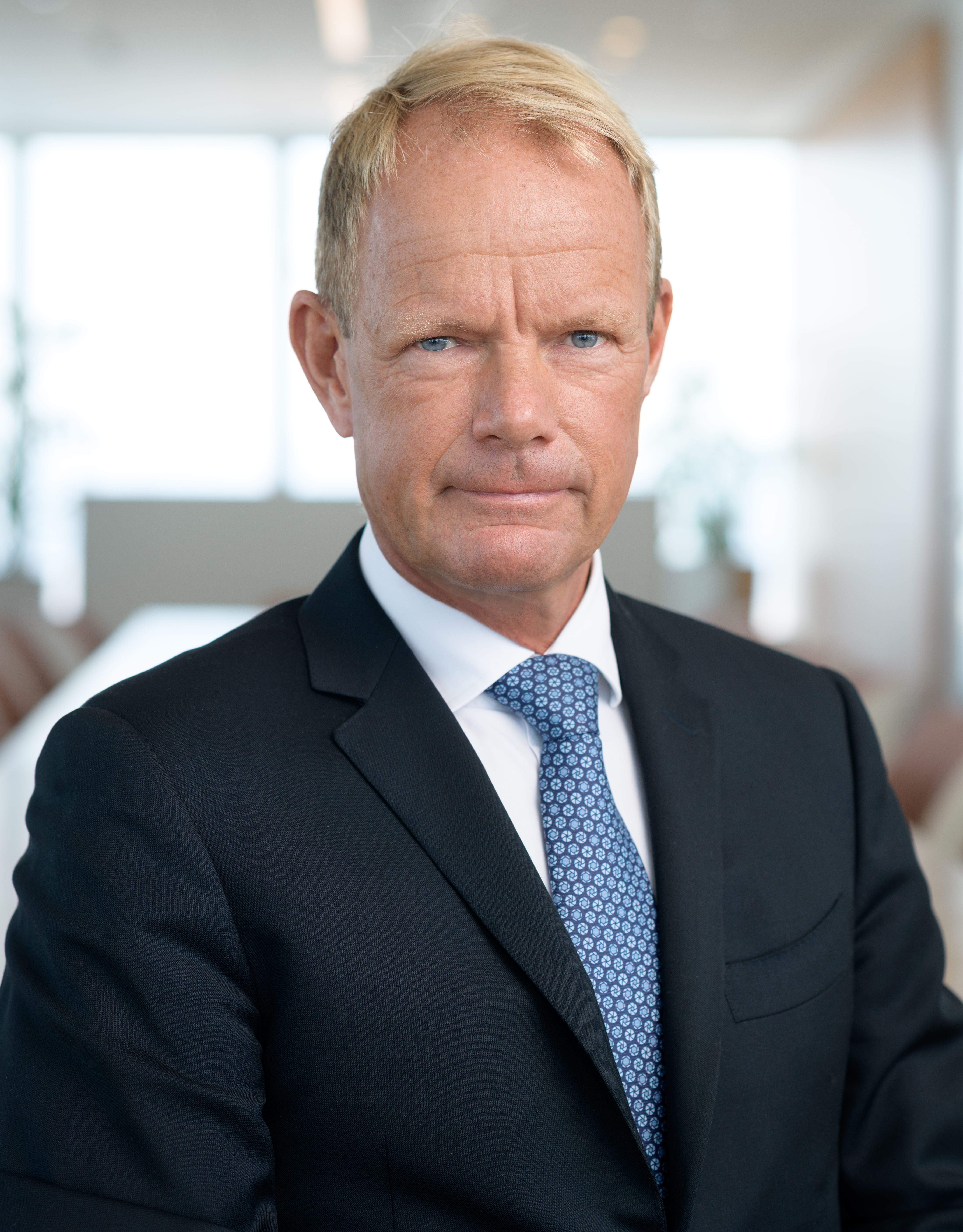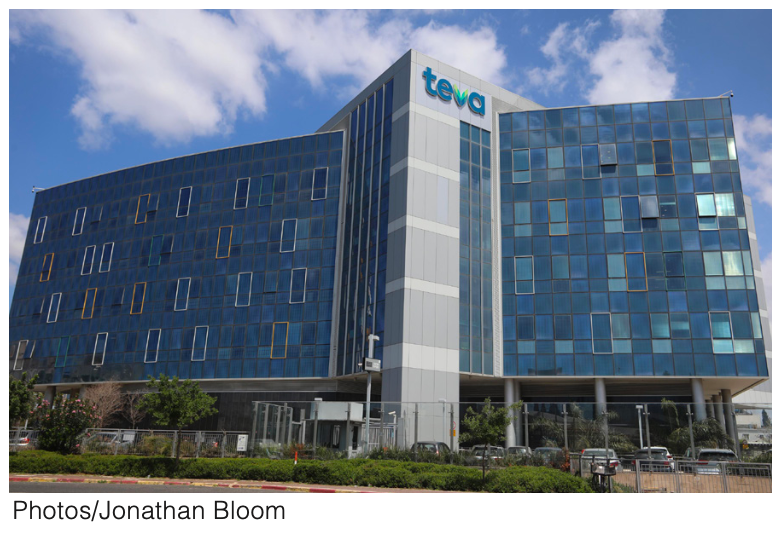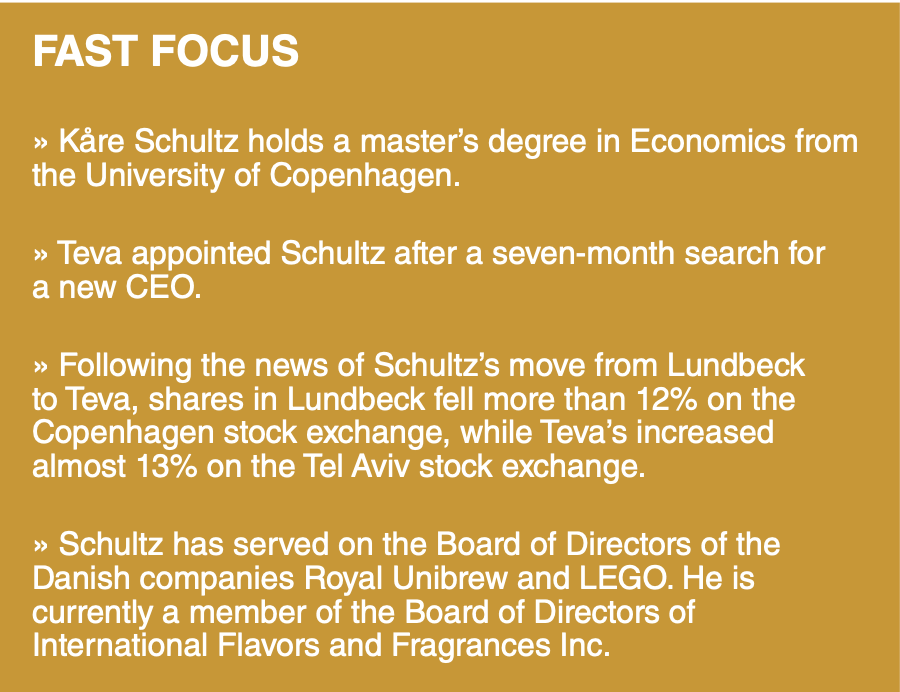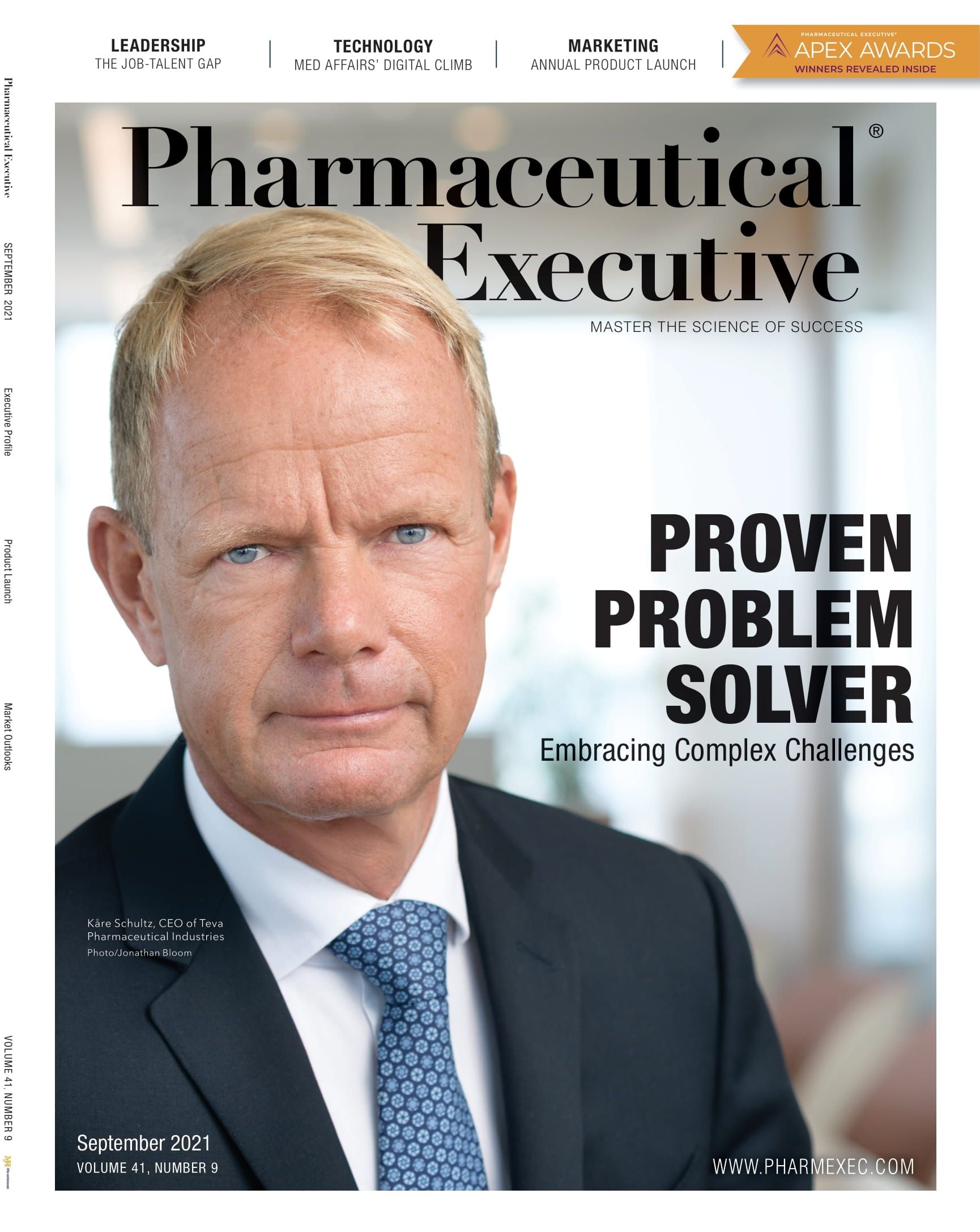Serial Problem Solver
Teva CEO Kåre Schultz talks about his long industry experience tackling major strategic and operational challenges, and how he is progressing on his current mission to turn around Teva’s fortunes.

Ater studying economics at the University of Copenhagen, Kåre Schultz began his career in consulting (at what was then Andersen Consulting, now Accenture). Soon after, he was recruited by the Copenhagen branch of McKinsey & Company to work on the SmithKline Beecham merger in London. He would fly from Copenhagen to London every Sunday night and come back to Denmark on Thursday or Friday. After three years, this commute was taking its toll. Schultz had a house and a young family based in Copenhagen, so he began looking for roles closer to home.
At this time (1989), the Danish companies Novo Industri and Nordisk Gentofte had just merged to form Novo Nordisk. Schultz had an opportunity to join the newly expanded organization as an economist. He was immediately interested in applying his skills and experience to “all those challenges that you have with mergers.” As well as dealing with the process of organizational integration, he found he also enjoyed tackling issues that he wouldn’t have expected to like, such as operational problems with manufacturing. He rose quickly in the organization.
“I would be promoted when there was a problem that had to be solved. And as there was always a problem that needed to be solved, I kept getting promoted,” he told Pharm Exec.
Schultz would remain at Novo Nordisk for more than 25 years, serving in a number of leadership roles, from vice president of product supply to chief operating officer. He played a major role in modernizing the company’s large-scale biologic production and in leading Novo’s expansion into the US and Chinese markets. In 2015, he left Novo to assume the role of CEO at another of Denmark’s top drugmakers, Lundbeck.
The challenges at Lundbeck appealed to his problem-solving nature and experience. The company was at that time facing a period “with an unusual number of uncertain variables,” involving critical patent expirations, exchange-rate fluctuations, and a planned roll-out of a new generation of products. One of Schultz’s first moves was to cut Lundbeck’s workforce by more than a sixth (1,000 jobs) to reduce its cost base. He facilitated further savings by minimizing general and administrative functions at the company’s affiliates and halting some of its early-stage research projects. Within 18 months, Lundbeck was showing improved revenue and profits. A new US focus started to pay off, driving a 5% sales growth overall in the first half of 2016. Among Lundbeck’s newer products, sales of the antidepressant Brintellix (Trintellix in the US) grew by 103% and almost doubled for the antipsychotic, Abilify Maintena.

Teva turnaround
Meanwhile, the Board of the troubled, Israeli-headquartered drugmaker, Teva Pharmaceuticals, was taking note of Schultz’s progress at Lundbeck. In mid-2017, Teva’s stock had fallen 43% from start of the year. In a bid to tackle its massive debt, which had spiraled to $34 billion after the company’s $40 billion acquisition of Actavis Generics (the generics arms of Allergan), the company reported it would be reducing its profit forecast by a billion dollars, cutting thousands of jobs, and selling off non-core assets. The 2016 Actavis acquisition had been led by then-CEO Erez Vigodman, with the intention of turning Teva into a generics giant. But generics competition in the US was intensifying and prices were eroding; soon it became apparent that Teva’s $40 billion outlay would not pay off. The latest in a series of costly takeovers for Teva, the Actavis deal made Vigodman’s position untenable; he exited the company in February 2017. By the time Teva tapped Schultz for the chief executive role in September; the company had been without a permanent CEO for six months.
Many pharma leaders may have balked at the idea of turning Teva around, but to Schultz the company’s position was appealing. “Teva had challenges, basically, on all points,” he says. “It had challenges with its balance sheet and with the patent expiry of its blockbuster multiple sclerosis treatment, Copaxone. It had huge integration challenges in that it had acquired some 20 companies over 20 years and had never really completed any basic integration.” But at the same time, Schultz goes on, it had “an enormous portfolio of some 30,000 products, providing more pharmaceuticals to the world than any other company. Added to that, Teva is based in Israel, which is a super interesting place.”
Certainly, Teva was a different kind of company to those in which Schultz had gained his experience. Novo Nordisk and Lundbeck are organizations with “a strong focus and stable foundations, focused on high levels of ethics, compliance, and environmental, social and corporate governance (ESG),” he notes. “They had grown slowly and organically over a long period. Teva, however, had done exactly the opposite: aggressive acquisitions all around the world, broad portfolio, all kinds of technologies. Anything you can imagine can be reproduced at Teva.”
Click to enlarge

What Schultz set out to do was to “bring to Teva some of the virtues I picked up throughout my career.” He explains: “So we are now working as what I call ‘One Teva.’ We’re not siloed; we’re trying to integrate the whole organization and get the basics right so that we are a lot stronger, a lot more efficient.” One of his challenges is to shift Teva’s strategy toward one of organic growth rather than acquisition.” He says, “Teva has always had the same strong values as a company, so there was no clash for me on the values side. But on the strategic side, it needed huge change.”
With the Teva Board and his management team, Schultz created a three-phase plan. “The first phase was the restructuring, which was quite severe and unpleasant, in the sense that we had to say goodbye to a lot of good people,” he says. “That was something I aimed to complete in my first two-and-a-half years with the company, and it all went ahead the way it was planned. We had to say goodbye to some 13,000 people and we reduced the spend base by $3 billion a year.”
The second phase concerns a process of “stabilizing and optimizing;” this is where Teva is now. “We are allocating all our free cash flow to debt reduction,” explains Schultz, “to head back to a normal balance sheet, a normal debt situation, one that is no longer a threat to the company.” He adds, “When I started, Teva had $34 billion of debt; we’re now down to something like $23 billion, and we need to bring that down further.”
The third phase will begin after 2023, “when we expect to see some significant growth in the top line,” says Schultz. “We are seeding this third phase by optimizing our manufacturing and expanding our portfolios of biosimilars, generics, and biologics.”
Working around COVID
As this wholesale restructuring of Teva was under way, the storm of COVID-19 came sweeping in. But Schultz approached the pandemic with the same pragmatic steadiness he brings to any other problem. While the volume patterns for many Teva products have been disturbed, some significantly (the absence of a “cough and cold season” last winter, for example, affected the company’s volumes in Europe), Schultz believes Teva will see “a more normal demand pattern in the second half of this year.”
Rather than dwelling on the pitfalls of the last 18 months, Schultz praises the “phenomenal job” the Teva employees have done in the midst of the disruption. “The teams in manufacturing, logistics, distribution, etc., were able to overcome the obstacles and basically keep supplying patients worldwide with the new products,” he says. At the start of the pandemic, Schultz introduced once-weekly meetings that were focused just on COVID-related issues. “We got the whole thing tightly organized within the first couple of weeks and we kept control on the situation with weekly updates on all the different elements and situations.” This regular, company-wide contact, he says, “actually strengthened collaboration at Teva between regions, markets, and districts. Employee engagement has gone up dramatically and positively.”

While he concedes that, from a long-term perspective, not being able to travel and have physical meetings with his teams will be damaging to business development, again he sets his stall on an imminent resolution. “I just hope we get everybody vaccinated worldwide as soon as possible and, maybe a year from now, return to more normal traveling patterns.”
This core of optimism helps to shape Schultz’s broader outlook as an inveterate problem solver. He strides toward solutions, even when facing obstacles that may seem insurmountable. “I’ve always said yes to any problem that was presented to me. It’s a part of my personality,” he says. “I’m very driven by complex problems, and, with its long timelines and complicated operational and manufacturing aspects, pharma is one of the more complex businesses.” He adds, “I think that is what has kept me in this business for so long.”
Julian Upton is Pharm Exec’s European and Online Editor. He can be reached at jupton@mjhlifesciences.com.
















